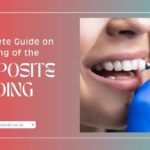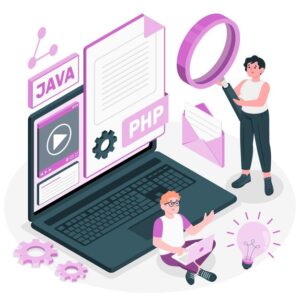Fatigue that won’t go away. Brain fog that lingers. A body that just doesn’t feel the same anymore.
For many living with long COVID, these symptoms are more than inconvenient—they’re exhausting, frustrating, and sometimes life-altering.
Long COVID, also called post-acute sequelae of SARS-CoV-2 infection (PASC), is an umbrella term for symptoms that persist for weeks or months after the initial infection has cleared.
Fatigue is among the most common and stubborn symptoms, affecting a significant portion of those recovering from COVID-19.
That’s where hyperbaric oxygen therapy (HBOT) is beginning to step into the spotlight. It’s not a new treatment, but its role in helping people recover from post-viral fatigue is gaining fresh attention.
So, what does the science say so far? And how might this treatment offer hope?
Understanding Long COVID Fatigue
Post-COVID fatigue isn’t just about feeling tired. It’s a deep, persistent exhaustion that rest alone doesn’t fix.
Alongside fatigue, people often experience poor concentration (sometimes called “brain fog”), shortness of breath, disrupted sleep patterns, and even chest pain.
These symptoms can dramatically reduce quality of life.
Experts think several factors contribute to this lingering fatigue. One is ongoing inflammation, which is the body’s natural response to injury or infection, but can become harmful when prolonged.
Another factor might be reduced oxygen delivery to cells—after all, COVID-19 can impact lung function and blood vessels. Finally, tissue damage from the virus might remain, needing support to heal fully.
Hyperbaric oxygen therapy targets these issues directly.
How HBOT Could Help?
In HBOT, you breathe pure oxygen inside a chamber where the air pressure is higher than normal. This environment helps your lungs take in more oxygen than usual. The extra oxygen then travels through your bloodstream, reaching tissues that might be starved for it.
Why does this matter? Oxygen is essential for energy production in cells. When your body has more oxygen, cells can repair faster, inflammation can decrease, and healing can accelerate.
Some research is showing that HBOT can reduce neuroinflammation and improve brain function, which might explain improvements in concentration and mood seen in long COVID patients. Others report better lung capacity and less shortness of breath after HBOT sessions.
In a recent small study, patients with long COVID fatigue showed significant improvements in just 10 sessions of HBOT, including better energy and cognitive function.
Real People. Real Stories.
Science aside, what really matters are the stories of those who’ve walked this path.
Take Sarah, for example. After battling COVID-19, she found herself drained, barely able to make it through her workday.
Traditional treatments didn’t help much. After trying HBOT, she began to notice subtle changes—a bit more energy, clearer thoughts, better sleep. These small shifts gave her the motivation to keep going.
Or John, a former athlete who struggled with brain fog and fatigue for months. HBOT helped reduce his symptoms enough that he could return to light exercise—something he never thought possible so soon.
While not everyone experiences these results, many share a similar sentiment: HBOT gave them renewed hope.
What Should You Expect in an HBOT Session?
If you’re curious about HBOT, here’s a quick rundown of what it looks like.
You’ll lie down in a special chamber—either a large, walk-in room or a smaller, tube-like device. The chamber is sealed and pressurized with pure oxygen. Sessions usually last between 60 and 90 minutes.
You might feel mild pressure in your ears, similar to what you experience on an airplane. Most people find the experience relaxing, and you can read, listen to music, or even nap during the treatment.
Sessions are typically scheduled over several weeks, allowing your body time to respond and heal gradually.
Is HBOT Safe?
HBOT is generally safe when overseen by trained professionals. Like any medical treatment, there can be risks, including ear discomfort or, rarely, oxygen toxicity. That’s why screening and supervision are important.
Before starting, a provider will usually review your health history to ensure you’re a good candidate. People with certain lung conditions, uncontrolled seizures, or recent ear surgery may not be eligible.
So, Is It Worth Trying?
While more research is needed, early results and patient experiences are promising. HBOT offers a non-invasive, drug-free option for people whose fatigue and brain fog have resisted other treatments.
If you or someone you know is navigating long COVID symptoms, especially persistent fatigue, learning about HBOT might open up new possibilities.
And if you’re looking for the latest research, expert insights, and patient stories, the upcoming Hyperbaric Therapy & Functional Medicine Conference is the perfect place to connect.
This event will gather doctors, researchers, and advocates who are passionate about advancing HBOT and functional medicine.
Looking Ahead
HBOT won’t be a miracle cure for everyone, but it may offer meaningful relief for many. The ongoing exploration of oxygen’s role in healing is helping more people reclaim their energy and clarity.
If you’re interested in exploring this treatment or want to hear from experts in the field, consider joining the IHA’s Hyperbaric Conference, taking place from September 25 to 28, 2025, at the Hilton Hotel in Pensacola Beach, Florida.
This gathering is a hub for knowledge-sharing, innovation, and community support.
- Can Hyperbaric Oxygen Therapy Help with Long COVID Fatigue? Here’s What We Know
- Hyperbaric oxygen therapy shows promise in reducing Long COVID fatigue by improving oxygen delivery and supporting tissue repair. Read the latest findings.
- IHA Medicine Conference, Hyperbaric Oxygen Therapy,
Related posts:
 Best Topical Finasteride & Minoxidil Spray for Hair Regrowth
Best Topical Finasteride & Minoxidil Spray for Hair Regrowth
 What Are the Key Considerations Before Getting Filler Injections?
What Are the Key Considerations Before Getting Filler Injections?
 Dr. Kami Hoss Gives Out the Truth About Brushing & Flossing-Protecting Your Teeth
Dr. Kami Hoss Gives Out the Truth About Brushing & Flossing-Protecting Your Teeth
 Blue Grass Guppy: A Mesmerizing Addition to Your Aquarium Life
Blue Grass Guppy: A Mesmerizing Addition to Your Aquarium Life
 Famotidine Pepcid for Cats: What Pet Owners Need to Know for Their Feline Friend
Famotidine Pepcid for Cats: What Pet Owners Need to Know for Their Feline Friend
 How Massage Therapy Can Improve Your Health: A Guide for Queens Residents
How Massage Therapy Can Improve Your Health: A Guide for Queens Residents
 A Complete Guide on the Pricing of the Composite Bonding in London
A Complete Guide on the Pricing of the Composite Bonding in London
 Your brief and useful guide to removable orthodontic appliances
Your brief and useful guide to removable orthodontic appliances







